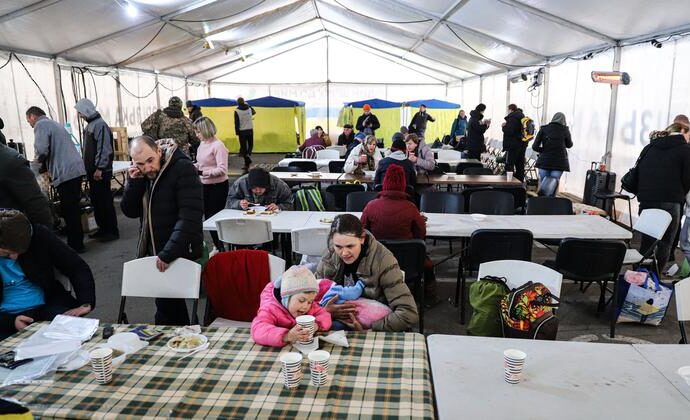The recent aid efforts in Ukraine and South Sudan, as well as the progress in the discharge of treated radioactive water in Japan, highlight the ongoing challenges and successes in humanitarian and environmental relief efforts around the world.
In recent news, a UN inter-agency convoy reached the front-line community of Huliaipole in Ukraine’s Zaporizhzhia region, providing much-needed assistance to around 2,000 people. The town has faced significant destruction and is currently without power, water, and gas. This humanitarian convoy marks the 13th this year to the Zaporizhzhia Region, with nearly 30,000 people already reached in the past 10 months. Additionally, non-governmental organizations (NGOs) delivered UN shelter materials in western Ukraine, following an attack that caused damage to hundreds of homes, schools, and other civilian facilities. The supplies will help protect residents as they prepare for the approaching winter. The Ukrainian Red Cross and national NGOs have also delivered emergency assistance, including legal and mental health support to affected families.
Meanwhile, in South Sudan, violence and threats against aid workers and humanitarian assets continue to hinder relief efforts. Despite these challenges, the UN and its partners have managed to reach at least four million people with aid. However, the needs of the affected population are growing, with approximately 333,000 people fleeing the war in Sudan arriving in the country. The Humanitarian Response Plan for South Sudan this year, which requires $1.7 million, is only around 50 percent funded. As a result, humanitarian partners are being forced to reprioritize and even suspend certain programs.
In Japan, the discharge of treated radioactive wastewater from the Fukushima Daiichi Nuclear Power Station is progressing as planned and without any technical concerns, according to a UN-backed task force. The task force, set up by the International Atomic Energy Agency (IAEA), reviewed the safety of the process two months after the water was released into the Pacific Ocean. The Fukushima Daiichi Power Station suffered extensive damage during the 2011 earthquake and tsunami, resulting in the contamination of water used to cool the plant. The water was treated and diluted through the Advanced Liquid Processing System (ALPS) and stored in special tanks. The IAEA previously stated that Japan’s approach and activities to discharge the treated water were consistent with relevant international safety standards.
These recent developments highlight both the challenges and successes in providing humanitarian aid and addressing environmental concerns. While efforts are being made to assist those affected by conflicts and natural disasters, violence against aid workers continues to impede relief efforts. In addition, funding shortfalls pose significant obstacles in meeting the growing needs of affected populations. However, progress in the safe discharge of treated radioactive water in Japan demonstrates the importance of adhering to international safety standards and collaborating with experts from various countries. These ongoing efforts emphasize the crucial role of international cooperation and collective action in addressing humanitarian and environmental challenges worldwide.









